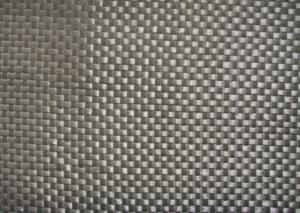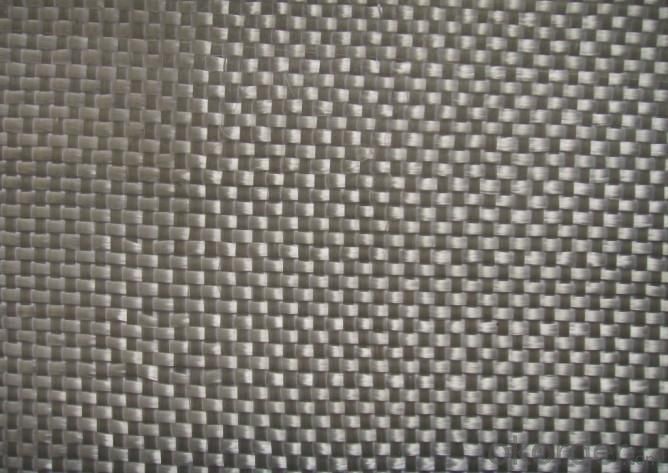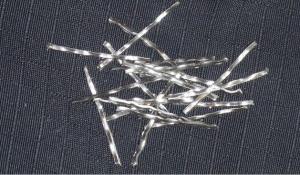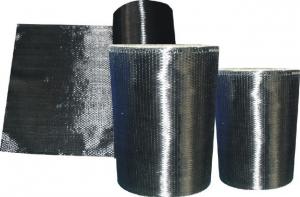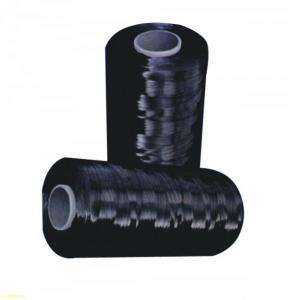Carbon Fiber T400
- Loading Port:
- China Main Port
- Payment Terms:
- TT or LC
- Min Order Qty:
- 100Kg m.t.
- Supply Capability:
- 1000Ton m.t./month
OKorder Service Pledge
OKorder Financial Service
You Might Also Like
Specifications of Carbon Fiber T400
1. Material: carbonized polyacrylonitrile fiber
2. Filament number:1k
3. Fiber type: T400
4. Tensile strength: 360kgf/mm2
General Data of Carbon Fiber T400
Weaving Style: Unidirectional, Plain, Twill
Input Available: 3k, 6k, 12k Carbon fiber
Weight: 15 0 ~ 600g / m2
Roll length: To be specified
Typical Range of Carbon Fiber T400
Remark :The above parameters are only in common condition. In case of order, the parameters are subject to the customer's confirmation.
CWP : Carbon plain weave fabric
CWT : Carbon twill weave fabric
CWU : Carbon woven unidirectional fabric
Storage of Carbon Fiber T400
It is recommended that the carbon fiber fabric are stored in a cool and dry environment. Recommended temperature range of storage is between 10 ~ 30 degree and relative humidity between 50 ~ 75%.The carbon fiber fabric should remain in the packaging until just prior to use.
Packaging & Delivery of Carbon Fiber T400
Product is manufactured in form of a roll wound on a paper tube and then packed in a plastic film and placed within a cardboard carton. Rolls can be loaded into a container directly or on pallets.
Packaging Detail: carton
Delivery Detail: within 20 days
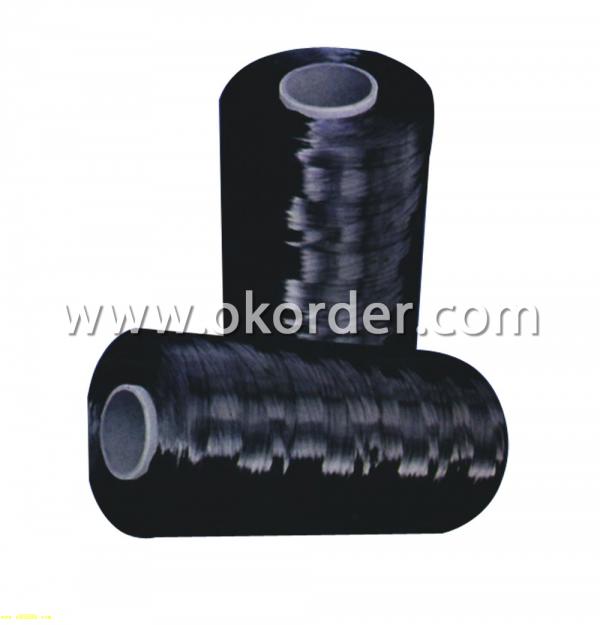
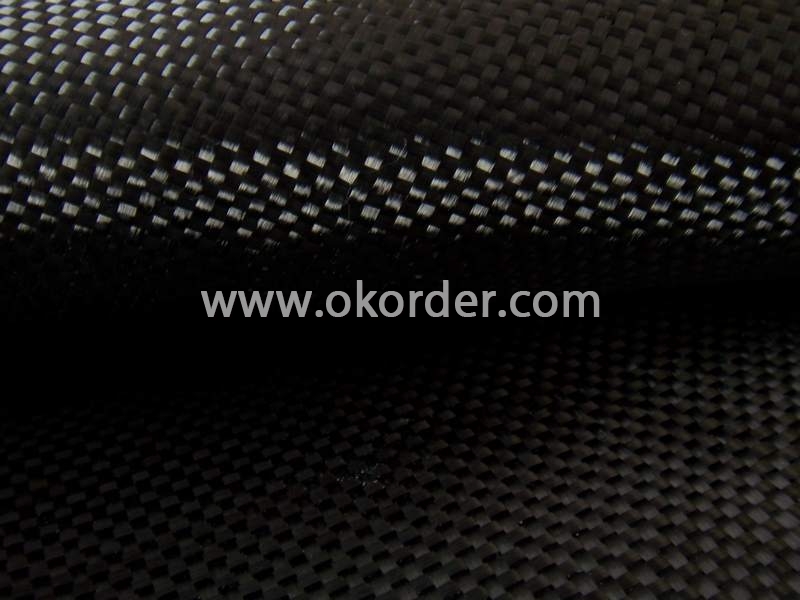
- Q: What are the advantages of carbon-based fertilizers?
- Farmers and gardeners favor carbon-based fertilizers for several reasons. Firstly, these fertilizers, such as compost and manure, are organic and derived from natural sources, devoid of synthetic chemicals. This eco-friendly quality reduces the risk of water pollution and soil degradation. Secondly, carbon-based fertilizers contain ample organic matter, enhancing soil structure and water retention. This proves especially helpful in areas with infertile soil or frequent droughts, as it conserves moisture and prevents nutrient loss. Furthermore, these fertilizers foster the growth of beneficial microorganisms in the soil. These microorganisms gradually break down organic matter, releasing essential nutrients and ensuring a steady supply to plants. The result is improved plant health and a decreased likelihood of nutrient imbalances or deficiencies. Additionally, carbon-based fertilizers prove cost-effective in the long run. Though they may require more effort and time initially, they can be produced on-site through composting or sourced locally from farms or livestock operations. This reduces the need for expensive chemical fertilizers and minimizes transportation costs. Lastly, carbon-based fertilizers aid in carbon sequestration and contribute to combating climate change. By utilizing organic waste materials as fertilizers, they divert them from landfills, where they would emit greenhouse gases. Instead, they are recycled into the soil, increasing its carbon content and promoting soil health. In summary, carbon-based fertilizers offer numerous advantages in terms of sustainability, soil fertility, cost-effectiveness, and environmental impact. Their usage can yield healthier plants, improved soil quality, and a more sustainable and resilient agricultural system.
- Q: What is carbon neutral certification?
- Carbon neutral certification is a recognition given to individuals, organizations, or products that have successfully reduced their carbon footprint to zero by balancing their greenhouse gas emissions with an equivalent amount of carbon offsets or renewable energy. It signifies a commitment to mitigating the negative environmental impact and contributing to a more sustainable future.
- Q: How to identify a laptop shell is carbon fiber
- Carbon fiber, as its name suggests, is made from carbon fiber, so there are several characteristics. First, if it is not colored, you can see the obvious fiber. Second is black carbon color. And it's a lot more than ABS.
- Q: How is carbon used in the production of paints and pigments?
- Carbon is used in the production of paints and pigments primarily as a black pigment. Carbon black, which is derived from the incomplete combustion of hydrocarbons, is mixed with binders to create black paints and pigments. It provides excellent opacity, color retention, and UV resistance, making it a popular choice in various applications, including automotive coatings, printing inks, and architectural paints.
- Q: How does carbon contribute to the color of gemstones?
- Carbon contributes to the color of gemstones through its ability to absorb certain wavelengths of light. When carbon is present in gemstones, it can create various color centers that give the gemstone its distinct hue, such as yellow in diamonds or blue in sapphires.
- Q: How does carbon affect the formation of haze?
- Carbon plays a significant role in the formation of haze as it is a major component of particulate matter, especially in the form of black carbon or soot. When released into the atmosphere through incomplete combustion processes, carbon particles can contribute to the formation of haze by scattering and absorbing sunlight. This leads to reduced visibility and the formation of a fog-like, hazy appearance in the air. Additionally, carbon particles can act as nuclei for the condensation of water vapor, further enhancing haze formation and the persistence of foggy conditions.
- Q: What are the consequences of increased carbon emissions on cultural heritage sites?
- Increased carbon emissions can have severe consequences on cultural heritage sites. The most immediate impact is climate change, which leads to rising sea levels, more frequent and intense natural disasters, and changes in temperature and precipitation patterns. These changes can directly damage or destroy cultural heritage sites, including archaeological sites, historic buildings, and monuments. Additionally, increased carbon emissions contribute to air pollution, leading to acid rain and atmospheric pollutants that can erode and deteriorate cultural artifacts. Furthermore, climate change can disrupt local communities and economies that depend on these heritage sites for tourism, resulting in a loss of cultural identity and economic decline. Overall, the consequences of increased carbon emissions on cultural heritage sites are both tangible and intangible, threatening our shared history and cultural diversity.
- Q: What are the alternatives to fossil fuels for energy production?
- Different options exist for energy production beyond fossil fuels, each with its own unique advantages and challenges. These options encompass: 1. Renewable Energy Sources: Renewable energy sources tap into constantly replenished natural resources such as solar, wind, hydroelectric, and geothermal energy. Solar energy converts sunlight into electricity using photovoltaic cells, while wind energy harnesses the power of wind to generate electricity. Hydroelectric energy is generated through the force of flowing water, typically from dams or rivers, and geothermal energy utilizes the Earth's core heat. These sources offer clean and nearly unlimited energy, reduce greenhouse gas emissions, and promote energy independence. However, they necessitate a substantial initial investment and are subject to limitations based on geographical location and weather conditions. 2. Nuclear Energy: Nuclear power plants produce electricity through nuclear fission, which involves splitting atoms of uranium or plutonium to release energy. Nuclear energy is highly efficient and emits no greenhouse gases during operation. It has the potential to provide consistent baseload power and significantly reduce reliance on fossil fuels. Nevertheless, concerns arise regarding the storage and disposal of nuclear waste, the risk of accidents, and the potential for nuclear weapons proliferation. 3. Bioenergy: Bioenergy utilizes organic materials like agricultural waste, wood pellets, or dedicated energy crops to generate heat, electricity, or biofuels. Biomass can be burned directly or converted into gaseous or liquid forms, such as biogas or bioethanol, to replace fossil fuels. Bioenergy is advantageous as a readily available and carbon-neutral energy source. However, it may compete with food production, necessitate significant land use, and raise concerns about deforestation and biodiversity loss if not sustainably managed. 4. Tidal and Wave Energy: Tidal and wave energy technologies harness the power of ocean currents and waves to generate electricity. These sources offer predictability and the potential for a consistent and reliable energy supply. However, the technology is still in its early stages, and challenges such as high upfront costs, environmental impacts, and limited geographic availability need to be addressed. 5. Hydrogen Fuel Cells: Hydrogen can be used as a fuel source in fuel cells to produce electricity. Hydrogen fuel cells combine hydrogen with oxygen from the air, generating electricity and water vapor as byproducts. Hydrogen is abundant and can be produced from various sources, including renewable energy. However, challenges include the high costs associated with production, storage, and distribution infrastructure, as well as the need for advancements in hydrogen storage technology. It is essential to recognize that a combination of these alternative energy sources, coupled with improvements in energy efficiency and conservation, is likely to create a more sustainable and resilient energy future. This approach will reduce our dependence on fossil fuels and mitigate the impacts of climate change.
- Q: How do human activities contribute to carbon emissions?
- Human activities contribute to carbon emissions in various ways. One major source is the burning of fossil fuels such as coal, oil, and natural gas for transportation, electricity generation, and industrial processes. Deforestation and land-use changes, mainly for agriculture and urbanization, also release significant amounts of carbon dioxide into the atmosphere. Additionally, industrial processes, including cement production and chemical manufacturing, release greenhouse gases. Overall, our reliance on fossil fuels and unsustainable land management practices are the primary drivers of human-induced carbon emissions.
- Q: How are carbon fibers used in manufacturing?
- Carbon fibers are used in manufacturing for their exceptional strength, light weight, and high stiffness properties. They are commonly used as reinforcement materials in various industries such as aerospace, automotive, sports equipment, and wind energy. Carbon fibers are incorporated into composites to enhance the strength and durability of products, making them ideal for applications where weight reduction and structural integrity are crucial.
1. Manufacturer Overview
| Location | Jiangsu,China |
| Year Established | 2002 |
| Annual Output Value | |
| Main Markets | Europe, America, Africa, Oceania and Japan, Korea, southeast Asia |
| Company Certifications | ISO9000 |
2. Manufacturer Certificates
| a) Certification Name | |
| Range | |
| Reference | |
| Validity Period |
3. Manufacturer Capability
| a) Trade Capacity | |
| Nearest Port | |
| Export Percentage | |
| No.of Employees in Trade Department | |
| Language Spoken: | |
| b) Factory Information | |
| Factory Size: | |
| No. of Production Lines | |
| Contract Manufacturing | |
| Product Price Range | |
Send your message to us
Carbon Fiber T400
- Loading Port:
- China Main Port
- Payment Terms:
- TT or LC
- Min Order Qty:
- 100Kg m.t.
- Supply Capability:
- 1000Ton m.t./month
OKorder Service Pledge
OKorder Financial Service
Similar products
Hot products
Hot Searches
Related keywords

